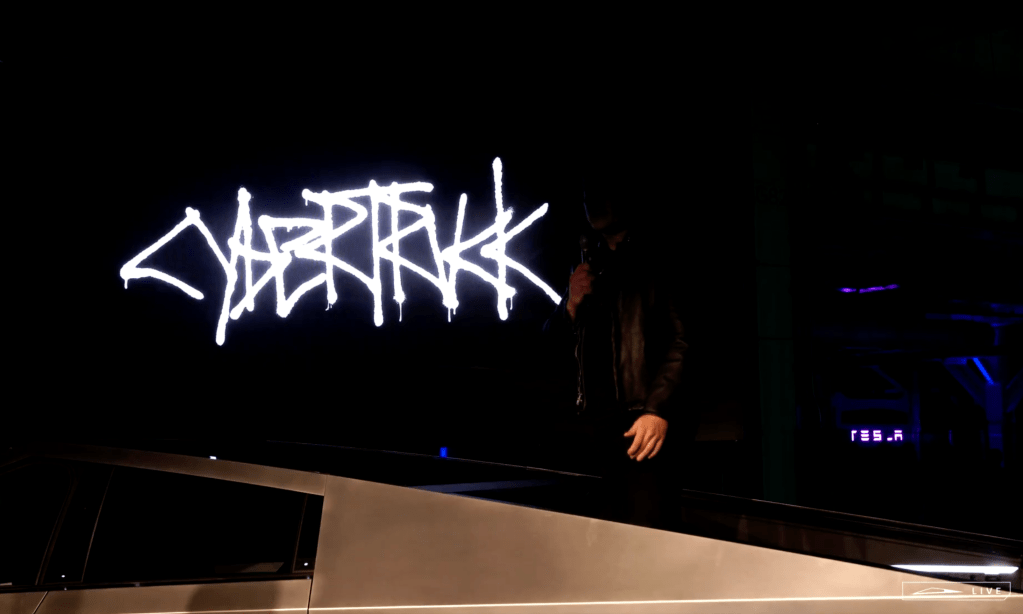We have a very basic LED lamp above our son’s bathtub that can cycle through different colors, which creates the vibe of “lowest-budget party you’ve ever attended.”
For him, that is enough. But I thought of that little lamp while watching Tesla’s Cybertruck delivery event yesterday. It had nearly the same vibe! This struck me because Tesla has been pretty competent at these events in the past, with television-grade production and, in the case of the Cybertruck reveal in 2019, a whole themed party outside the event space.
This time, though, it was Musk standing in a truck bed, his head shrouded by darkness, going over the Cybertruck’s über-macho bona fides. He didn’t bother to utter the price (much higher than originally promised), or the range (much less than originally promised). Rather, he focused on how it can get stop bullets from a Tommy Gun, and that: “If you’re ever in an argument with another car, you will win.”
That’s a hell of a thing to hear from a guy whose car company boasts about engineering the “safest in the world.” But it gets at what the Cybertruck really is: the ultimate expression of the decades-long trend of car buyers increasingly buying unnecessarily large vehicles due in part to the deep, sometimes subconscious (but often not!) feeling that it will make them safer. Car companies have been more than happy to satisfy, or even encourage, this craving, even at the expense of pedestrian safety.
In other words, the Cybertruck is the EV for Doomers.
And Musk was more than explicit about this! During the event he half-joked that Tesla has “the finest in apocalyptic equipment” fit for the “late civilization vibes” that surround us. He also kept justifying the design because he thinks “the future should look like the future,” which is slightly more optimistic (and tautological) tagline that doesn’t seem to jive with the apocalypse bit… unless it’s what he’s counting on happening.
If that’s the case, maybe the Cybertruck will actually move some units. After all, this thing will cost $100,000 for the foreseeable future as the lower-priced variants are set to debut in 2024 and 2025, if they ever arrive at all. Given how much the wealthy Silicon Valley set love cosplaying as preppers, then yeah, I could see them drooling over this and ignoring how uninspiring — perhaps simply terrifying — the early crash test footage looks.
One thing’s for sure: whatever progress Tesla made with the Model Y and Model 3 in lessening the aspersion that its cars are just toys for rich dicks is certainly at threat here. Luckily those buyers don’t care.
In the long run it won’t matter, but the event was a shoddy affair. I say that having watched it online, because Tesla no longer invites the media to its events, so it surely could have played better in the room, and probably did since it was mostly filled with owners and shareholders. But many moments seemed viscerally slapdash even through the screen, like when Musk had Tesla’s head designer Franz von Holzhausen “recreate” the steel-ball-cracking-the-window fail from the 2019 event… but with a baseball? As if that was supposed to prove… anything?
All of this overshadows some of the real interesting tech Tesla developed for the truck (moving to a 48-volt architecture, steer-by-wire) as well as the many unanswered questions (they’re still calling the steel an “exoskeleton” despite reporting that that idea had been abandoned).
The crude event is even wilder considering how Musk said the night before during his NYT DealBook interview that it “will be the biggest product launch of anything by far on Earth this year.” Sure didn’t look like it.

Leave a comment